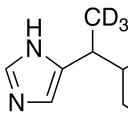Clipping defoliation and nitrogen addition shift competition between a C3 grass (Leymus chinensis) and a C4 grass (Hemarthria altissima).
Từ khóa
trừu tượng
Human-induced disturbances, including grazing and clipping, that cause defoliation are common in natural grasslands. Plant functional type differences in the ability to compensate for this tissue loss may influence interspecific competition. To explore the effects of different intensities of clipping and nitrogen (N) addition on compensatory growth and interspecific competition, we measured accumulated aboveground biomass (AGB), belowground biomass (BGB), tiller number, non-structural carbohydrates concentrations and leaf gas exchange parameters in two locally co-occurring species (the C3 grass Leymus chinensis and the C4 grass Hemarthria altissima) growing in monoculture and in mixture. For both grasses, the clipping treatment had significant impacts on the accumulated AGB, and the 40% clipping treatment had the greatest effect. BGB gradually decreased with increasing defoliation intensity. Severe defoliation caused a significant increase in tiller number. Stored carbohydrates in the belowground biomass were mobilized and transported to aboveground for the growth of new leaves to compensate for clipping-induced injury. The net CO2 assimilation rate (A) of the remaining leaves increased with clipping intensity and peaked under the clipping intensities of 20% or 40%. Nitrogen addition, at a rate of 10 g N m-2 yr-1 , enhanced the A of the remaining leaves and non-structural carbohydrate concentrations, which benefited plant compensatory growth, especially for the C3 grass. Under the mixed planting conditions, the clipping and N addition treatments lowered the competitive advantage of the C4 grass. The results suggest that the combination of defoliation and N deposition have the potential to benefit the coexistence of C3 and C4 grasses.


